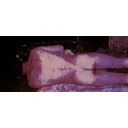CO gas.
Are workers in
sterilization of tools in hospitals exposed to CO gas toxicity???
Emergency diagnosis and
management is life saving
Highly poisonous, colorless, odorless and heavy gas with rapidly progressive toxicity due to great affinity to Hb 210-300 times than that of O2.
Symptoms: are silent and rapidly progressive as the victim may not notice any thing except headache until he lapses into coma and death as COHb is stable.
Clinical picture is variable according to concentration of COHb in blood.
20% COHb causes throbbing in temples and ringing in ears.
55% COHb causes loss of power in the whole of the skeletal muscles, impaired of vision and hearing then coma with signs of shock.
60% convulsions, coma, failure of respiration and death.
- Above 70% immediate death
Post exposure complications
- Pneumonia, bronchopneumonia or lung oedema which may cause death after 2-3 days especially in elderly.
- Confusion, disorientation, parkinsonism paralysis in encephalopathy depending on the duration of suboxia of brain tissue.
Liver, heart kidneys or muscle necrobiois due to suboxia. Alteration of liver function , ECG changes Albumin, sugar and myoglobin in urine and renal failure may occur.
*Post mortem picture :
Hypostasis, skin, mucus membrane, viscera and blood all have cherry red discoloration.
*With prolonged exposure the brain shows degeneration of the basal ganglia and thalamus.
Symptoms: are silent and rapidly progressive as the victim may not notice any thing except headache until he lapses into coma and death as COHb is stable.
Clinical picture is variable according to concentration of COHb in blood.
20% COHb causes throbbing in temples and ringing in ears.
55% COHb causes loss of power in the whole of the skeletal muscles, impaired of vision and hearing then coma with signs of shock.
60% convulsions, coma, failure of respiration and death.
- Above 70% immediate death
Post exposure complications
- Pneumonia, bronchopneumonia or lung oedema which may cause death after 2-3 days especially in elderly.
- Confusion, disorientation, parkinsonism paralysis in encephalopathy depending on the duration of suboxia of brain tissue.
Liver, heart kidneys or muscle necrobiois due to suboxia. Alteration of liver function , ECG changes Albumin, sugar and myoglobin in urine and renal failure may occur.
*Post mortem picture :
Hypostasis, skin, mucus membrane, viscera and blood all have cherry red discoloration.
*With prolonged exposure the brain shows degeneration of the basal ganglia and thalamus.
All but ONE of the following can be complications of CO toxicity:
|
Optic atrophy.
| |
|
Bronchopneumonia.
| |
|
Amnesia.
| |
|
Hemiplegia.
| |
|
E.C.G. changes.
|
CO is always considered a very dangerous poison because:
|
Its affinity to Hb is very high
| |
|
It is odorless and painless poison
| |
|
It can cause muscle weakness
| |
|
All of the above
| |
|
Only a , b
|
